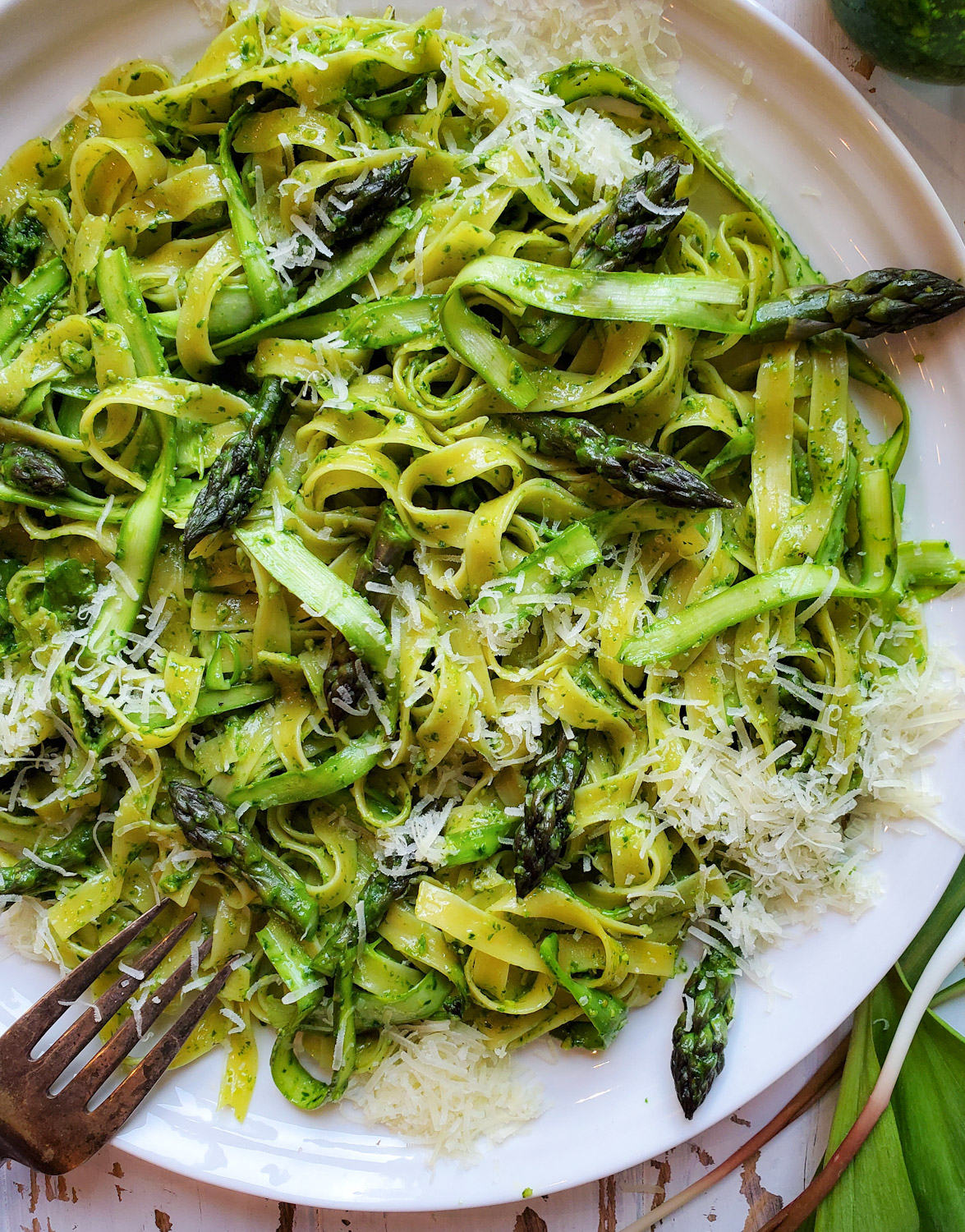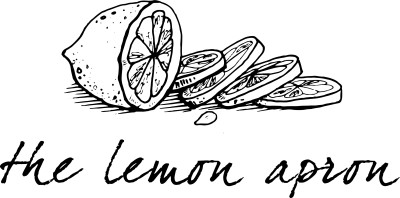So I just finished up jarring this year’s ramp pesto stash, to live on through the year.
 Every year we have the best time heading out into the bush to get dirty and scratched up, all in the name of digging up ramps, or wild leeks, and fiddleheads. I have a whole blog post dedicated to the fun of foraging. Along with the absolute best pesto recipe! Yep, it’s that good. Sure, it showcases ramps. But I use this recipe as the master recipe for all pesto versions, so you must check it out. Whether you want to make a basil, spinach, or even broccoli or pea pesto, this Recipe will help you out.
Every year we have the best time heading out into the bush to get dirty and scratched up, all in the name of digging up ramps, or wild leeks, and fiddleheads. I have a whole blog post dedicated to the fun of foraging. Along with the absolute best pesto recipe! Yep, it’s that good. Sure, it showcases ramps. But I use this recipe as the master recipe for all pesto versions, so you must check it out. Whether you want to make a basil, spinach, or even broccoli or pea pesto, this Recipe will help you out.

So I was staring at this year’s little jars wondering what I would make first. And this recipe happened.
Can You Eat Asparagus Raw?
Short answer is YES. Of course, the thicker it is, the more of a crunchy, raw sensation you will get. Think of it as eating raw green beans. That is why a gentle steam or quick sauté softens them just enough so that the entire stem is a pleasure to eat. But if you take a few steps, you won’t even have to steam the asparagus, unless of course you want it more pliable, like for today’s pasta dish.
First things first, always trim away the bottom 1 1/2 inches or so to remove any woody parts of the stem. You could use a knife and make an arbitrary guess as to where the woody portion ends, or you can just take the stem in both hands and break gently until it naturally snaps at the prime spot. Everything above the snap is good!
Next thing to do, get out your vegetable peeler. Peel long strands along the stem, a few from each side until no more shaving can happen. These long fettuccini-like shavings are great in a salad as is. This works especially great on the thicker stemmed asparagus, since you will have more surface to work with. I just snack on the remaining middle section while peeling away.
Now you are left with the top tip. Trim these off from the stem, and again, these could be eaten as is, or can be gently steamed for just a 20 seconds or less, depending on the size. You will need the shavings and tips for the recipe below.

Treating the Asparagus like Pasta
You will cook the pasta in a large skillet with high sides. Cooking the pasta in less water than a pot can hold ensures that the pasta water will become nice and creamy from the pasta starch. When the pasta is almost cooked through, add the asparagus shavings and tips. They will only need about 10-15 seconds in the hot water, so make sure the pasta is about done at this point. Before draining everything, reserve at least 1/2 cup of the pasta water. Then drain the pasta and asparagus and return it to the skillet. Now you will be adding pesto. Of course, I used my ramp pesto, but you can pretty well use any pesto you want at this point. You will need up to 1/2 cup of pesto. Toss some pesto in with the pasta and asparagus and stir to coat. Now start adding the reserved pasta water to thin it out and turn the pesto into a creamy sauce. Stop when you like the consistency. How much pasta water will depend also on how thick your pesto is to begin with.
Final Additions
Freshly grated Pecorino or Parmesan cheese, a good squeeze of fresh lemon, and chilli flakes will all help to brighten and finish this dish. And of course, if you have Manchego or other favourite hard cheese in the crisper which you would rather use, go for it! This is dish is a simple way to showcase Springtime asparagus and fresh herbs or ramps. Here’s a great tip: why not increase the amount of asparagus and reduce the amount of pasta in the recipe? You will end up with a more vege-centric dish and lower carbs. Because the asparagus shavings really do imitate the fettuccine noodles, you won’t even notice if there is less pasta in the dish! And yes, in the summer, when you have way too many zucchini on the counter, replace the asparagus shavings with zucchini noodles, and the fettuccini with spaghetti, and use a spinach pesto, and this dish gets a whole new life!
Love Jen
Check out my Pickled Ramps recipe for a fun little Japanese flavoured spring pickle to add to your charcuterie board. And there’s a fabulous Fleeting Fiddlehead Galette which showcases foraged (or purchased) spring fiddleheads.


Asparagus Fettuccini with Ramp Pesto
Ingredients
- 340 grams thick asparagus stalks trimmed of the bottom woody ends, or 3/4 lb
- 225 grams uncooked fettuccine pasta or 8 oz
- 1/3-1/2 cup homemade or purchased pesto see Notes
- 1/3 cup grated Pecorino-Romano or other hard cheese for garnish
- fresh lemon for garnish
- hot pepper flakes for garnish, optional
Instructions
-
Use a vegetable peeler to shave asparagus stalks into long, thin strips (about 2 1/2-3 cups shaved asparagus). Reserve the tips as well for the dish.
-
Fill a high-sided skillet with at least 2 inches water. Bring water to a boil over high.
-
Add pasta to skillet, and completely submerge; cook until al dente, about 8 to 12 minutes, use the directions on the package of pasta you are using.
-
Add shaved asparagus and tips to pasta; let everything simmer another 20 seconds or so.
-
Reserve 1/2 cup cooking liquid. Drain pasta and asparagus; return everything to the skillet. Reduce the heat to low or even off. If you are using cast iron, it will retain enough heat without the burner on.
-
Spoon the ramp pesto (or pesto of choice) into pasta; toss well to coat.
-
Stir in reserved cooking liquid, 1 tbsp at a time, until sauce is slightly creamy and thoroughly coats pasta.
-
Toss with cheese and serve.
-
Finish with a good squeeze of lemon and a dusting of hot pepper flakes if desired. Optional.
Recipe Notes
For Ramp Pesto recipe, click here

Leave a Reply